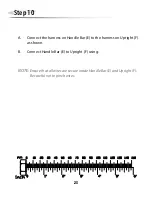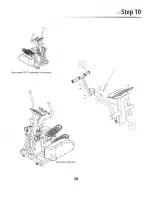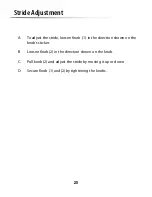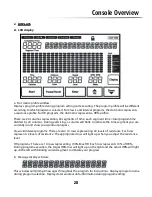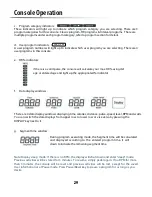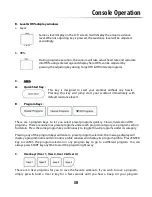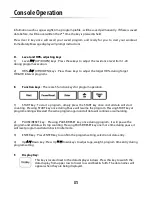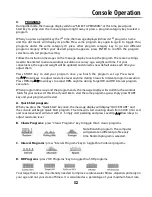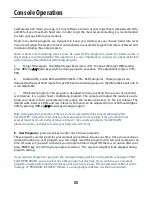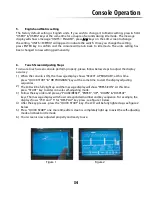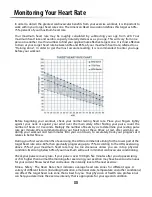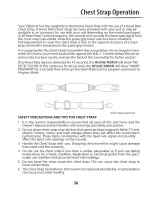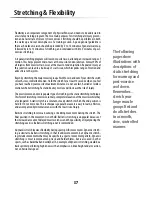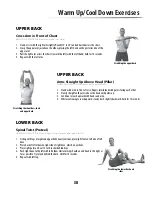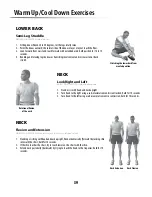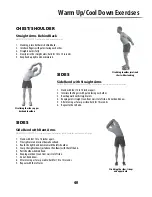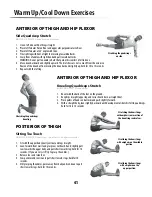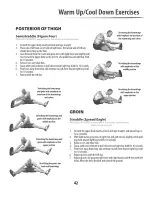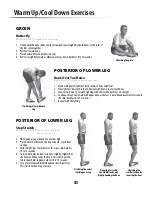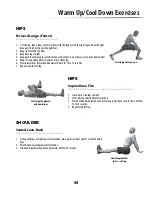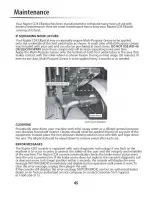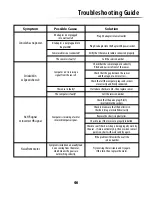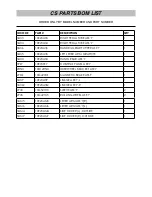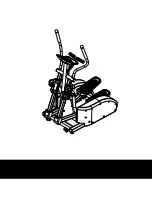
Stretching & Flexibility
Flexibility is an important component of physical fitness and needs to be addressed in
a resistance training program. The two main purposes for stretching are injury preven-
tion and a faster rate of recovery from exercise. Stretching should be performed in both
the warm up and cool down phases of a training session. A good general guideline is
that each workout session should be preceded by 5 to 15 minutes of general warm up,
followed by 8 to 12 minutes of stretching, and concluded with 4 to 5 minutes of post-
exercise stretching.
A regular stretching program will loosen muscle tissue, allowing an increased range of
motion. This helps prevent micro-tears at the muscle-tendon junction. Almost 90% of
all injuries from muscle strain occur at the muscle-tendon junction. Repeated injury at
this junction can lead to a build-up of scar tissue, which impedes range of motion and
adds stress to the joints.
Begin by stretching the major muscle groups first. Move in and out of your stretches with
smooth, slow, controlled motion. Hold the stretch for at least 10 seconds when you feel
you have reached your muscle’s maximum distance. Do not use fast, hurried or reckless
motions when stretching. Fast and bouncy motions will increase the risk of injury.
The most common and most popular type of stretching is the static stretching technique.
This form of stretching involves voluntary, complete relaxation of the muscles while they
are elongated. A static stretch is a constant, steady stretch in which the end position is
held for 10 to 30 seconds. This technique is popular because it is easy to learn, effective,
and accompanied by minimal soreness with the least risk of injury.
Ballistic stretching involves a bouncing or bobbing movement during the stretch. The
final position in the movement is not held. Ballistic stretching is unpopular because of
the increased amount of delayed muscle soreness and the possibility of injury during the
stretching exercise. Ballistic stretching is not recommended.
A dynamic stretch involves flexibility during sport specific movements. Dynamic stretch-
ing is similar to ballistic stretching in that it utilizes movement, but dynamic stretch-
ing includes movements that may be specific to a sport or movement pattern. Dynamic
stretching is most common among track and field athletes, but is also used in other
sports, such as basketball and volleyball. An example of dynamic stretching would be a
track sprinter performing high knees with an emphasis on knee height and arm action,
not on horizontal speed.
The following
pages show
illustrations with
descriptions of
static stretching
for warm up and
post-exercise
cool down.
Remember...
stretch your
large muscle
groups first and
do all stretches
in a smooth,
slow, controlled
manner.
37
Summary of Contents for Raptor CDX
Page 1: ...Raptor CDX Raptor CDX Elliptical User Manual ...
Page 5: ......
Page 6: ......
Page 8: ......
Page 10: ......
Page 12: ......
Page 14: ......
Page 16: ......
Page 18: ......
Page 20: ......
Page 22: ......
Page 24: ......
Page 26: ...Stride Adjustment 26 3 1 2 ...
Page 27: ......
Page 36: ......
Page 42: ......
Page 45: ......
Page 48: ...Schematic MODEL RAPTOR CDX ...
Page 49: ......

